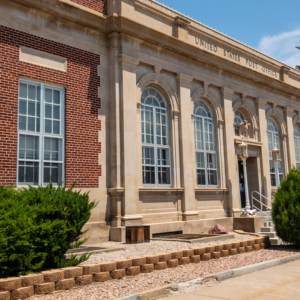
All day I’ve been thinking about mail, and especially about how mail policies in the mid-1800s relate to the Pony Express. After struggling with the issue though, I’ve decided it’s just too large to condense into a blog post.
I’ve read books, articles, dissertations, pamphlets, websites, whatever I’ve been able to find about mail to Salt Lake City and the west coast from 1847 until the completion of the transcontinental railroad in 1869 on a range of topics, including: Congressional policy; presidential favoritism; the personalities of the contractors and carriers; their scams and travails; mail by steamer and mule via the Isthmuses of Panama and Tehuantepec vs. overland mail; the central overland route vs. the southern “oxbow” route; shifting Postmaster General positions on the role of the mail as a settling influence vs. a need to make it revenue neutral (which it never was and never will be); the myriad intricacies of mail contracts awarded to which firm for how much per annum; losses of contracts and the endless lawsuits brought against the government for compensation; the Pony Express itself, of course, as well as the Bone Express (messages carved into bleached animal and even human skulls), the Brigham Young Express (BYX, nipped in the bud by the Mormon Conflict in the late-1850s), and the Butterfield copy of the Pony Express (which never came to be); the jackass mail; Snowshoe Thompson, the Norwegian who regularly crossed the Sierra Nevada back and forth on skis in two days with a hundred pounds of mail on his back; the Prairie Post Offices (trees ‘skinned and written upon, giving names of individuals and companies,’ ‘all trees near the road covered with cards, some of paper and some of boards.’ ); star bids and franked mail; the million-dollar mail contract coveted by William Russell (of Russell, Majors & Waddell who ran the Pony Express) only to be lost largely thanks to his conviction for embezzlement of Indian Trust Fund bonds from the US government; emigrants swimming the Platte at Ft. Kearny and the North Platte at Ft. Laramie to drop mail to be sent back home; men waiting for days in line to receive mail in San Francisco in 1850 (“When the monthly steamer arrived from Panama bearing mail from the East, a canon was fired on San Francisco’s Telegraph Hill, followed by bedlam throughout the city.”) . . .
There are so many facets to the issue of mail in the mid-1800s I couldn’t do any of them justice in this small space.

But I will say that in the course of riding the Pony Express Bikepacking Route, it has unfailingly cheered me every time I’ve seen a US Post Office. These are buildings I have never bothered to notice, even when I used them. In Davisville I’ve always viewed having to go to the post office as maybe a step above going to the DMV. Seeing these federal buildings like outposts in every tiny little out-of -the-way, underpopulated town across the prairie and the plains has been . . . Inspiring, in some weird way. I don’t know how exactly I feel about it; I can just report that it moves me somehow.
In part, I think, it’s because the mere existence of a federal post office seems to debunk the message of the “Don’t Tread on Me” and “Don’t Blame Me I voted for Trump” flags I’ve seen throughout the trip (with increasing frequency as I travel west). Seeing these residents, these fellow Americans, with anti-government messages on their cars and trucks (mostly trucks) walking into and out of post offices seems almost laughably ironic. Where would they be without the federal government they despise? (BTW, that’s a rhetorical question.)
Put another way:
This model of government support for a major development project [the building of the Lander Cutoff on the Oregon Trail] became popular and was accepted as the new norm for western growth. Each new phase of frontier growth—the railroads, ranching, mining—was also supported by either outright government subsidies, land giveaways, or federally supported irrigation and bridge-building projects. That was the tradition established by the Oregon Trail and it has always amused me that the myth of ‘rugged individualism’ still plays such a large role in western folklore and American values. In fact, our vaunted rugged individualism was financed by huge government largesse.
Over the summer, we camped at small-town public parks and the public corrals dozens of times, across two thousand miles of America. We lived on the public space established by the pioneers. Rugged individualism and manifest destiny, for which the West is still celebrated, are fine things to believe in, but they never existed as abstractions. People were desperate and they needed free land and free places to camp, which government decided to supply, and still does. This national legacy was one of the best discoveries of crossing the Oregon Trail . . .
The American frontiersman expressed his individualism by seeking an untrod path into the wilderness for a new home. Yet the pioneers’ individualism and adaptability did not preclude their willingness to call upon the government for practical help in solving problems of migration and transportation. When projects, because of size or financial outlay, were beyond the means of private enterprise or the collective action of a western community, the resources and sponsorship of the national government were unhesitatingly demanded. Local groups constantly besieged Congress with requests for roads and other internal improvements. In the process localism was broken down, and a great desire to expand national power soon permeated most western communities. The pioneer became a nationalist as well as an individual.
Somehow post offices have come to represent that point of view for me. I wish I’d taken pictures of the post offices in every town, but I came to that realization too late. The gallery below has a few. Enjoy.





